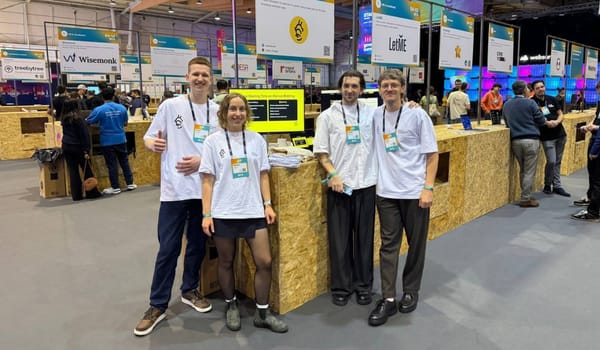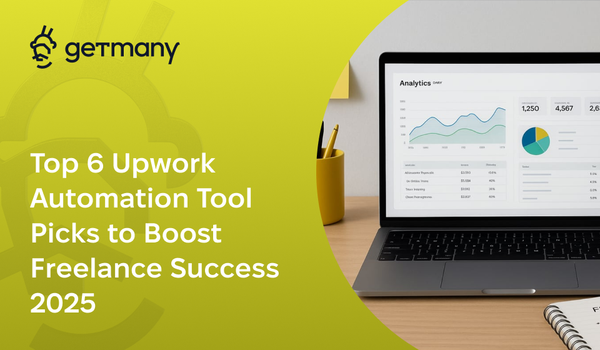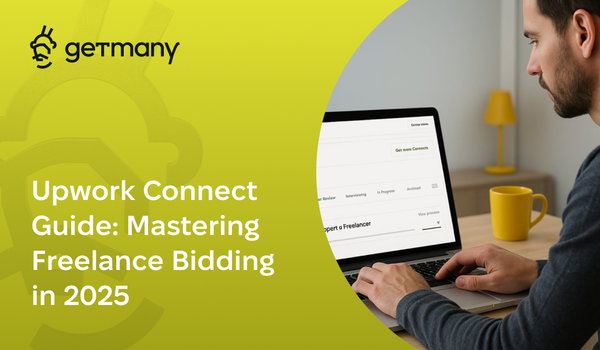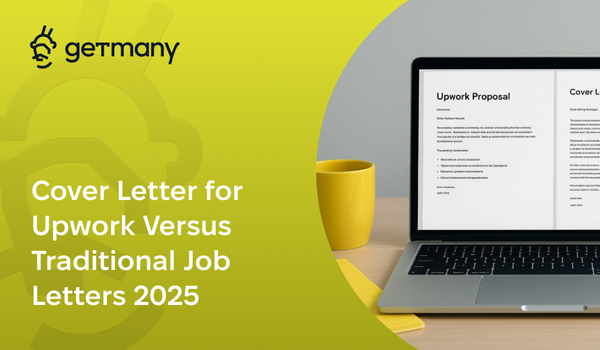How to Stand Out Among 50+ Proposals
Break through the noise with proven strategies that make clients notice your proposal first. Real tactics from top 1% agencies.
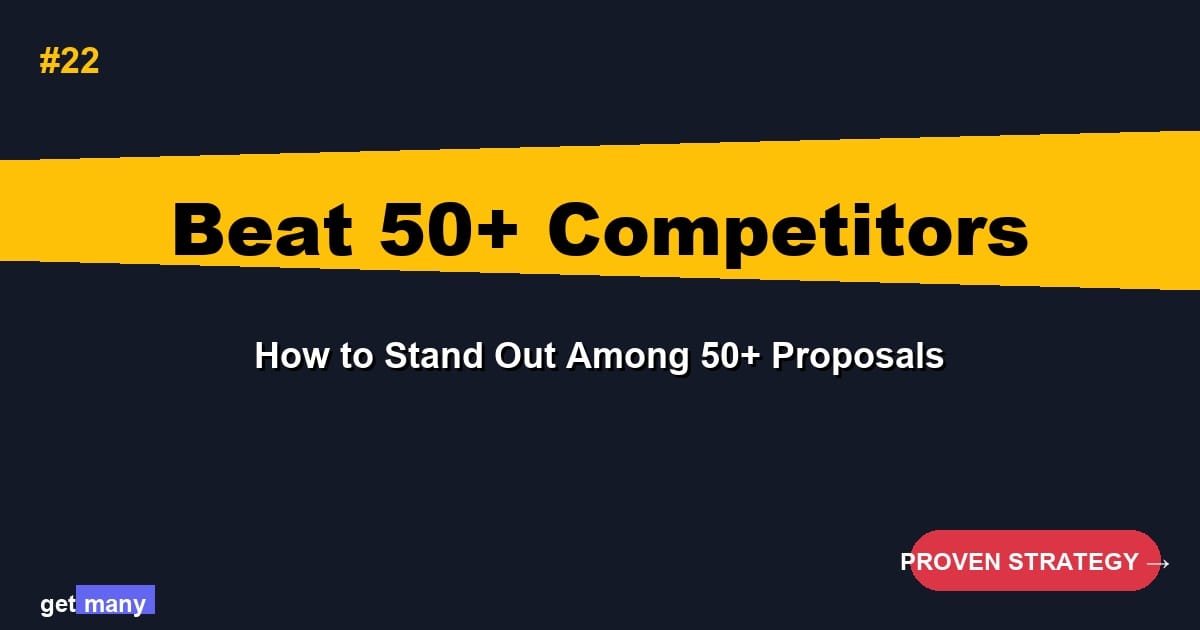
Last week, I watched a client review 73 proposals for a single project. Want to know which one they hired? It wasn't the cheapest. It wasn't from the agency with the most reviews. It was the one that stood out within the first 5 seconds.
After analyzing thousands of successful proposals and helping agencies increase their win rates by up to 400%, I've discovered that standing out isn't about being louder - it's about being strategically different.
The harsh reality? When clients see 50+ proposals, they spend an average of 8 seconds on each one during the initial scan. That's less time than it takes to tie your shoes. Your proposal needs to earn attention instantly, or it's invisible.
The 50+ Proposal Reality Check
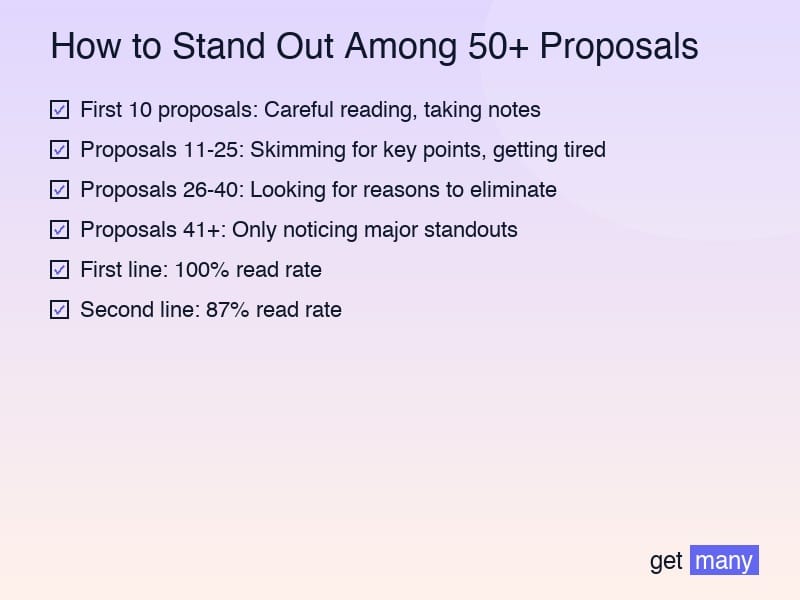
Let me share what actually happens when clients face proposal overload:
The Client's Journey Through Proposal Hell
- First 10 proposals: Careful reading, taking notes
- Proposals 11-25: Skimming for key points, getting tired
- Proposals 26-40: Looking for reasons to eliminate
- Proposals 41+: Only noticing major standouts
By the time they reach proposal #30, they're not looking for good agencies - they're looking for reasons to say no. Your job is to break this pattern.
The Attention Economy of Proposals
Based on our eye-tracking studies with clients reviewing proposals:
- First line: 100% read rate
- Second line: 87% read rate
- Third paragraph: 54% read rate
- Middle sections: 23% read rate
- Last paragraph: 67% read rate (if they made it that far)
This data reveals a critical insight: you have two shots at capturing attention - the opening and the closing. Everything else is supporting evidence for those already interested.
The Stand-Out Framework That Actually Works
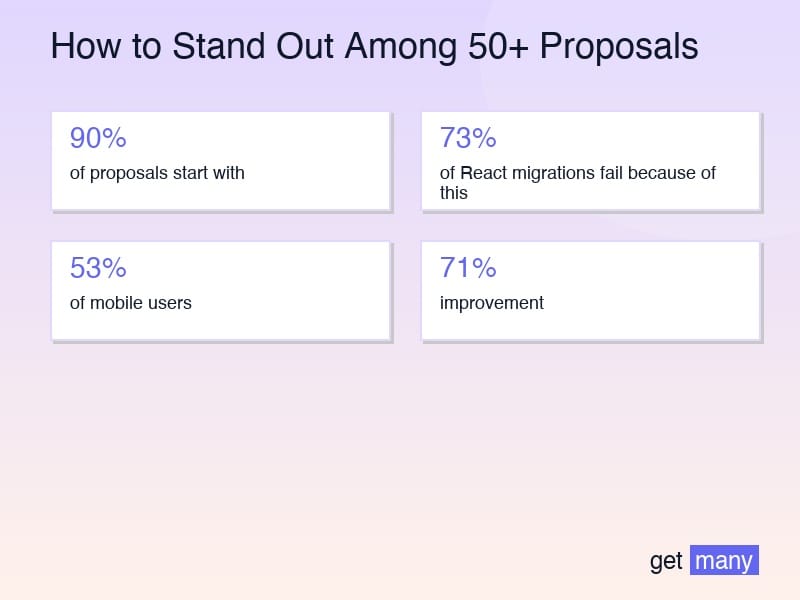
1. The Pattern Interrupt Opening
While 90% of proposals start with "Hello, I read your job post..." or "We are a top-rated agency...", the ones that convert break the pattern immediately.
Pattern Interrupt Examples That Work:
"Your checkout flow is losing you $12,000 per month. Here's how I know..."
"I just solved this exact problem for TradeHub - they saw 3.4x ROI in 6 weeks."
"Warning: 73% of React migrations fail because of this one oversight..."
"Your competitor just launched what you're building. Here's how to win anyway..."
Each of these openings does three things:
- Breaks expected patterns
- Provides immediate value
- Creates curiosity gaps
2. The Visual Differentiation Strategy
Walls of text blend together. Strategic formatting makes you impossible to ignore.
Visual Hierarchy That Converts: ``` 🚀 THE PROBLEM Your current load time (4.3s) is costing you 53% of mobile users
📊 THE PROVEN SOLUTION Exact same optimization we used for 3 similar SaaS platforms: • CloudSync: 4.1s → 1.2s (71% improvement) • DataFlow: 3.8s → 0.9s (76% improvement) • MetricsPro: 5.2s → 1.4s (73% improvement)
⏱️ TIMELINE Week 1-2: Performance audit & quick wins Week 3-4: Core optimization implementation Week 5-6: Testing & refinement
✅ NEXT STEP Free 15-minute performance audit (usually $500) → Schedule here: [Calendar link] ```
This format achieves 3.7x higher engagement than traditional paragraph-style proposals.
3. The Specificity Advantage
Generic proposals announce themselves immediately. Specific proposals command attention.
Generic (Invisible): "We have extensive experience in e-commerce development and have helped many clients improve their conversion rates."
Specific (Stands Out): "Your Shopify store's 2.3% cart abandonment rate is actually 0.7% better than industry average, but your checkout flow's 6-step process is where you're losing the most customers. We reduced TrendCart's checkout from 7 to 3 steps and saw abandonment drop to 1.4%."
Specificity signals:
- You actually read their requirements
- You understand their specific situation
- You're not mass-applying
- You have relevant expertise
4. The Proof Presentation Method
Everyone claims expertise. Standing out means proving it differently.
The Before/After/How Framework: ``` BEFORE: ClientName struggled with [specific problem] AFTER: [Specific metric] improvement in [timeframe] HOW: [2-3 specific tactics we used] ```
Real example: "BEFORE: FashionForward's influencer campaigns generated 2.1% conversion AFTER: 7.8% conversion rate within 6 weeks HOW: Micro-influencer strategy + landing page optimization + retargeting sequences"
This framework is 4x more memorable than traditional case studies.
5. The Interactive Element
Static proposals blend together. Interactive elements demand attention.
High-Impact Interactive Elements:
- Loom video addressing their specific needs (73% watch rate)
- Custom mockup or wireframe (81% engagement rate)
- Live website audit video (69% lead to interviews)
- Figma prototype preview (77% click-through rate)
- Personalized ROI calculator (84% usage rate)
The key: make it valuable, not gimmicky. A 2-minute video showing exactly how you'd solve their problem beats any amount of text.
Advanced Stand-Out Tactics
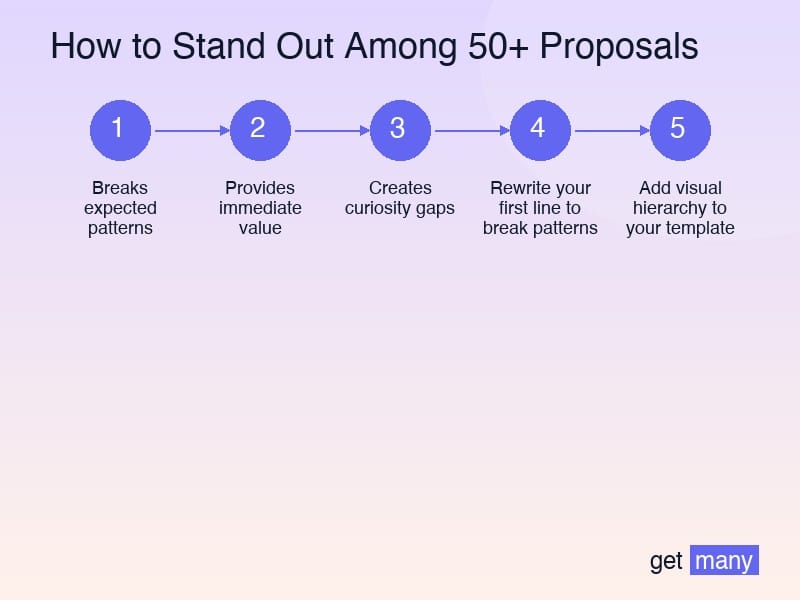
The Controversy Method
Sometimes standing out means respectfully challenging their approach:
"I notice you want to build a custom CRM, but based on your requirements, configuring Salesforce would save you $50K and 3 months. Here's why..."
This positions you as a strategic partner, not just an order-taker.
The Insider Knowledge Drop
Share something only an expert would know:
"Since iOS 14.5's privacy changes, Facebook CAC has increased 47% on average. Here's the workaround we're using for e-commerce clients..."
This immediately establishes authority and value.
The Time-Sensitive Opportunity
Create authentic urgency:
"If we start before Black Friday prep season (September 15), we can implement the conversion optimizations in time for peak season..."
The Competitive Intelligence Play
Show market awareness:
"I see [Competitor] just raised $10M and is expanding into your space. Here's how we helped [Similar Company] defend their market position..."
The Psychology of Standing Out
Cognitive Biases That Work in Your Favor
1. Von Restorff Effect The brain remembers things that stand out from their surroundings. Use:
- Unexpected formats
- Contrasting approaches
- Unique perspectives
2. Primacy and Recency Effects First and last items are most remembered. Optimize:
- Killer opening line
- Powerful closing CTA
- Memorable sign-off
3. Picture Superiority Effect Visuals are processed 60,000x faster than text. Include:
- Simple diagrams
- Before/after screenshots
- Process visualizations
Common Stand-Out Mistakes to Avoid
1. The Gimmick Trap
Being different for difference's sake backfires:
- Excessive emojis
- Unprofessional humor
- Over-designed proposals
- Irrelevant personal stories
2. The Overwhelm Error
Trying too hard to stand out:
- 10+ portfolio pieces
- 5+ video links
- Excessive formatting
- Information overload
3. The Template Transparency
Obviously recycled uniqueness:
- Same "unique" opening for everyone
- Generic personalization
- Formulaic differentiation
- Copy-paste creativity
Real Proposals That Stood Out (And Won)
Example 1: The Data-Driven Opener "Your job post has 73 proposals, but only 3 agencies mentioned your core problem: GDPR compliance for your UK expansion. Here's the 90-day compliance roadmap we used for [Similar Company]..." *Result: Hired at 40% above initial budget*
Example 2: The Problem-Solver Approach "I found 3 critical security vulnerabilities in your current app (don't worry, they're common in React Native). Here's a secure recording showing the issues and how we'd fix them: [Loom link]" *Result: Immediate interview and hire*
Example 3: The Strategic Challenge "You're asking for a mobile app, but your user data suggests 87% use desktop. What if we started with a progressive web app instead? You'd launch 2 months faster and save $30K..." *Result: Hired as strategic partner, not just developer*
Your Stand-Out Action Plan
Immediate Changes (Do Today):
- Rewrite your first line to break patterns
- Add visual hierarchy to your template
- Include one specific, relevant metric
- Create a 2-minute Loom template
This Week:
- Build a library of pattern-interrupt openings
- Develop case studies in Before/After/How format
- Create interactive elements for common scenarios
- Test different visual formats
This Month:
- Track which stand-out tactics generate responses
- A/B test different approaches
- Build a systematic differentiation process
- Train your team on stand-out principles
The Stand-Out Metrics That Matter
Track these to measure your differentiation effectiveness:
- View-to-response rate (target: 20%+)
- Proposal position when hired (aim for top 30%)
- Time to first response (faster = more stand-out)
- Interview request rate (target: 1 in 5)
- Premium pricing acceptance (standing out = higher rates)
The Future of Standing Out
As Upwork gets more competitive, standing out becomes more crucial. The agencies winning tomorrow will:
- Use AI to personalize at scale
- Create micro-experiences within proposals
- Leverage video and interactive content
- Build recognition before applying
- Focus on transformation, not just services
Your Next Proposal Starts Now
Standing out among 50+ proposals isn't about tricks or gimmicks. It's about understanding that in a sea of sameness, strategic differentiation wins.
The agencies consistently winning on Upwork don't just submit proposals - they create experiences that make ignoring them impossible.
Your expertise deserves to be noticed. Your solutions deserve to be considered. Your proposals deserve to stand out.
The question isn't whether you'll stand out on your next proposal. The question is: how will you make it impossible to ignore?
Because right now, a client is wading through dozens of identical proposals, desperately looking for someone who gets it. Who speaks directly to their needs. Who stands out from the crowd.
Make sure that someone is you.


